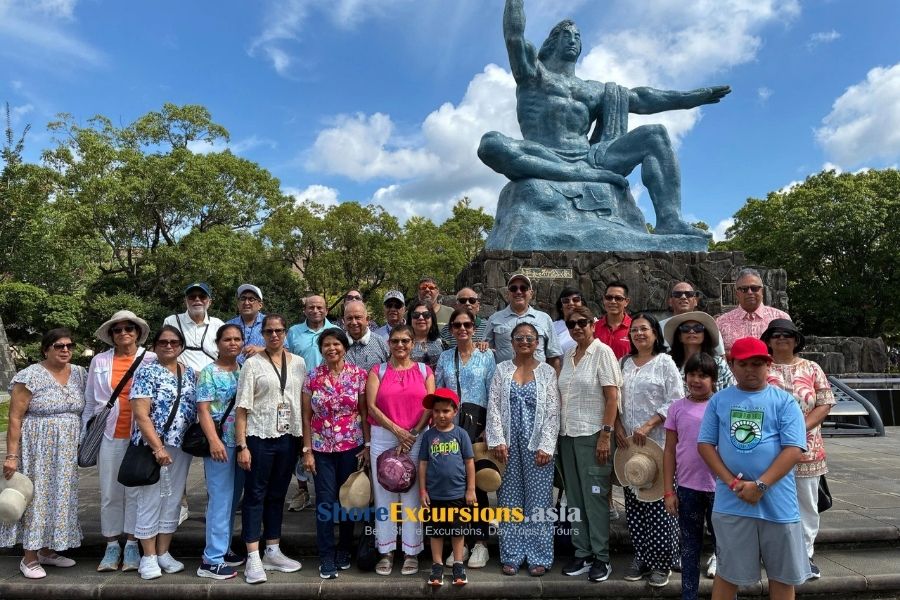Nagasaki is the center of international exchange and the capital of Nagasaki Prefecture located on the island of Kyushu in Japan. It rapidly became the main trading port with Portuguese and many of its architectural sites have been influenced since then. Between the 17th and 19th centuries, it is the only port in Japan open to foreign traders. Unfortunately, Nagasaki is one of the two cities to experience the most tragic destruction of an atomic bomb towards the end of World War II.
However, this city nowadays still remains one of the best places to visit in Japan thanks to its impressive historical and natural attractions. For your convenience, visitors can choose Nagasaki Shore Excursions to not only experience this wonderful city but also to explore further other parts of Japan including the famous island – Okinawa. Below on this article, Japan Shore Excursions would like to introduce the best attractions in Nagasaki.
Why Visit Nagasaki in Your Next Trip?
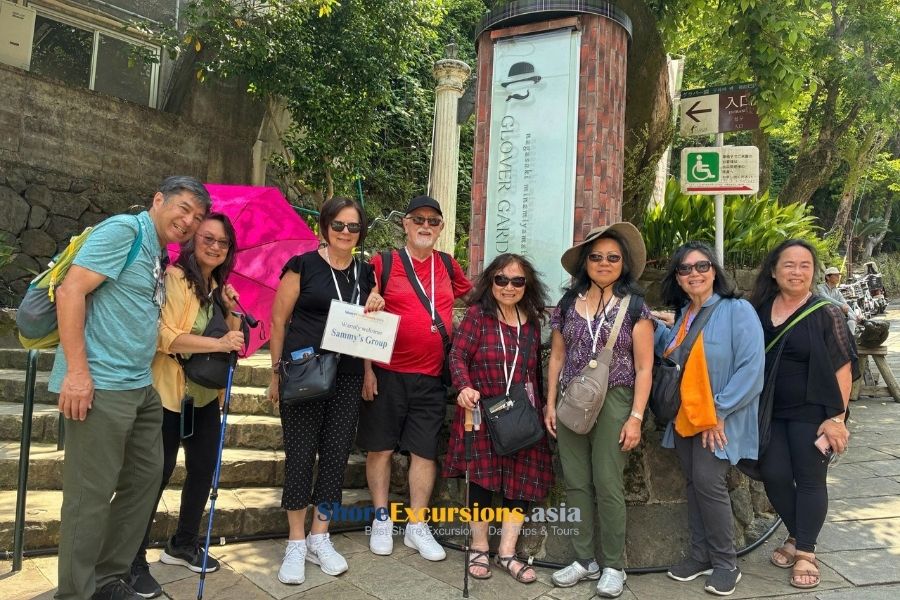
Nagasaki is one of Japan’s most fascinating cities, a place where history, culture, and natural beauty meet in remarkable ways. Known around the world for its tragic role in World War II, Nagasaki has since transformed into a city of peace, resilience, and cultural harmony. For centuries, it was also Japan’s window to the outside world, a vital hub of trade and exchange that left behind a unique blend of Japanese, European, and Chinese influences.
Today, visitors can explore Nagasaki through a rich mix of experiences: walking through historic districts, reflecting at memorial parks, tasting local specialties, and taking in stunning harbor views. Here’s why it deserves a spot on your Japan itinerary:
- Deep Historical Significance: As one of the two cities affected by the atomic bomb, Nagasaki offers moving sites of remembrance.
- Cultural Fusion: During Japan’s isolation period (Sakoku), Nagasaki was the only port open to limited foreign trade, shaping its distinctive international character.
- Diverse Travel Experiences: From world-class museums and European-inspired gardens to volcanic landscapes and hot springs, Nagasaki offers a balanced mix of learning and leisure.
Best Things To Do & See in Nagasaki
Nagasaki Peace Memorial Park
Located to the north of the city center in Urakami, the Peace Memorial Park born in 1955 to commemorate the atomic bomb explosion of Nagasaki on August 9, 1945. It lies next to the Atomic Bomb Museum and near the Peace Memorial Hall. The complex includes two parks and a memorial museum that draw over a million visitors annually. It is also where the iconic Nagasaki Peace Statue situated reminding people of the nuclear tragedy and world peace.
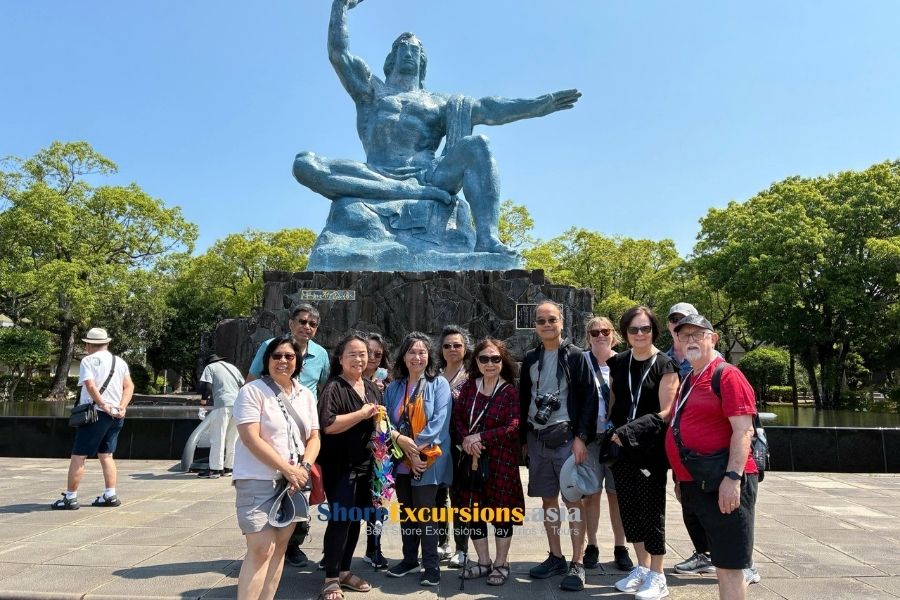
Every year, a Peace Memorial Ceremony takes place in front of this statue. Various governments around the world donated to the park’s facilities with lots of trees, flowers, artworks, and other memorials. Besides, there are also monuments for the Korean and Chinese victims of the explosion.
In the center is the Hypocenter Park with a black monolith that resembles the explosion's epicenter. Not far from it, visitors can encounter a damaged pillar of the former Urakami Cathedral which was destroyed in the blast. Besides, there is an area where visitors can take a look at a layer of soil under the park's surface where broken pieces of glass, roof tiles, and bricks remain from the explosion.
Atomic Bomb Museum
Locating on the hill above the Hypocenter Park is the solemn Nagasaki Atomic Bomb Museum. The museum dedicated for the remembrance of the atomic bomb explosion on August 1945. What makes the museum one of the must-visit places in Nagasaki is it involves both historical features and educational aims. The main mission of the museum is to remind future generations about the dreadful destruction of war and the need for lasting world peace.
Next to the museum stands the Nagasaki National Peace Memorial Hall in tribute to the victims of the atomic bombing with modern design. The hall is located mainly underground and its design involves water and light. Visitors coming to the museum can not only learn about the history of nuclear arms development but also take a look at significant displays that include documents, artifacts, and photographs related to the bombing.
Dejima Museum - Historic Trading Post
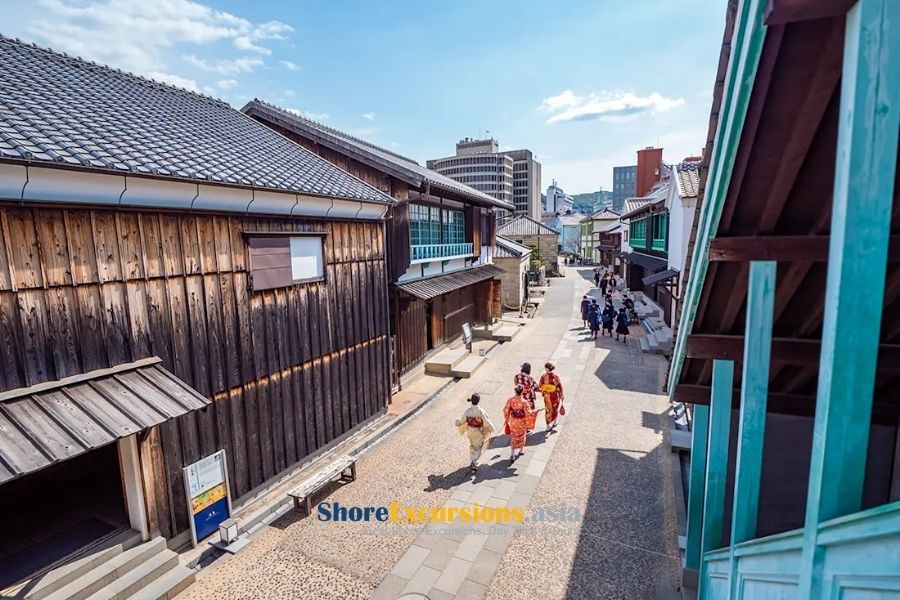
Dejima once was a man-made island in the port of Nagasaki but after reclamation in the 20th century, Dejima is now most famous for its historical sites remain such as various residences, warehouses, walls, and gates. One of those is Dejima Museum, a group of small buildings, which provides visitors an understanding about the birth of Dejima and the activities of the Dutch East India Company Dejima Factory. Its themes focus mainly on trade and culture. There are tidy streets lining on either side by large buildings, which embraced traditional Japanese style in their design like white walls, dark wooden beams, and slanting tiled roofs.
Shimabara Castle
Shimabara Castle is a white flatland castle located in Shimabara, Hizen Province. This five-story white building has an amazing age that built in 1624. Besides, the castle is the symbol of the decadence and brutality of the local feudal lords and the Tokugawa Shogunate. The castle construction was paid for by the heavy taxation, which is one of the causes leading to the significant uprising - Shimabara Rebellion. During the Meiji Period, Shimabarajo was eventually destroyed.
The current buildings that we see today are just reconstructions from 1964. The castle has five stories home to the Castle Tower Museum where displays of Christian artifacts such as the castle ruins, armor, and weapons are kept. The observation deck on the highest floor provides a breathtaking view to Mount Unzen and across the water to Kumamoto. Japan Shore Excursions' experts always recommend cruisers to visit this splendid landmark, especially during springtime.
Glover Garden - Traces of Western Influence
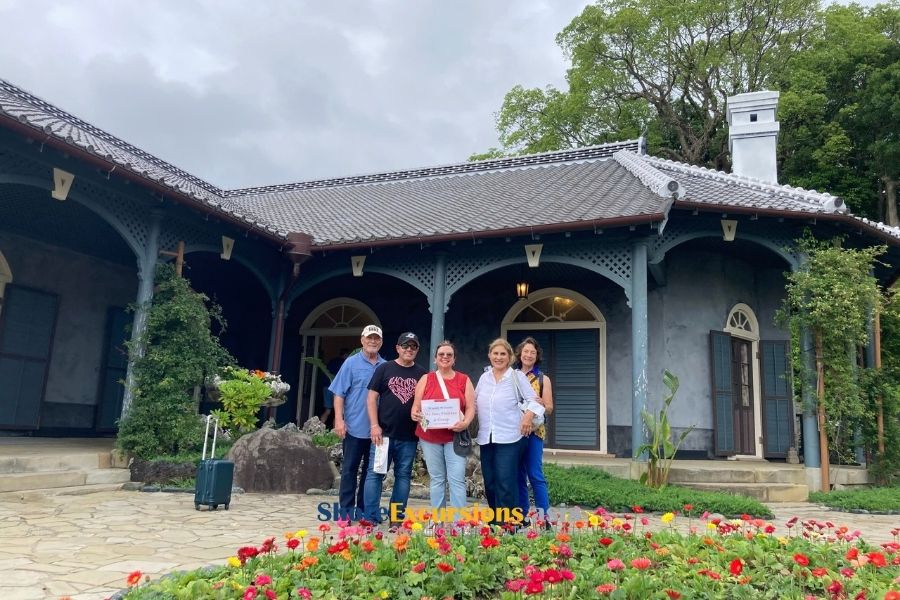
Glover Garden, situated on the Minamiyamate hillside overlooking Nagasaki harbor, is a park completed by Hidenoshin Koyama in 1863. It is where the mansions of several of the city's former foreign residents and related buildings are exhibited. The main attraction of the garden is the Former Glover House, built in tribute to Thomas Glover who was a Scottish merchant featuring significantly in the early history of Japan's industrialization. It is among the most popular tourist attractions in Nagasaki for the old charming Western style. This house was also the venue where Glover's meetings with rebel samurai are held.
Hashima Island (Gunkanjima - Battleship Island)
Nicknamed “Battleship Island” due to its fortress-like appearance, Hashima was once a thriving coal-mining facility. At its peak, it housed thousands of workers, but after the mine closed in 1974, the island was abandoned. Today, guided boat tours allow visitors to land on Hashima and walk among the ruins, offering a haunting yet fascinating look at Japan’s industrial past.
Site of the Martyrdom of the 26 Saints
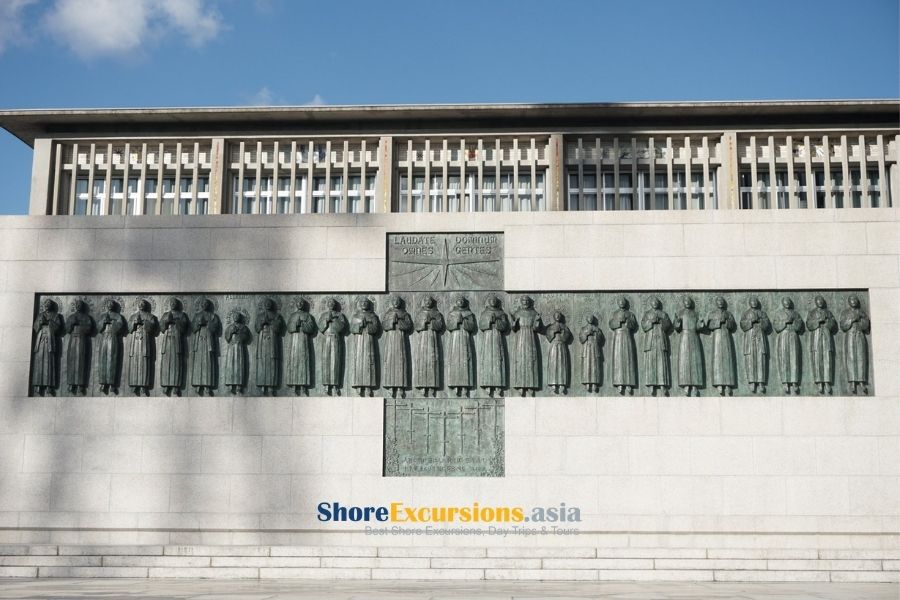
Its name comes from the event of 26 Catholics executed by crucifixion in 1597 under the order of Toyotomi Hideyoshi. Nowadays, this spot on Nishizaka Hill has become a Japanese National Sanctuary. Behind the real-sized bronze statues of 26 saints stands the Memorial Hall presenting the history of Christianity and exhibitions. For example, Nakaura Julien’s letter, the private record of the battle of Shimabara, the Maria Kannon sculpture, a bronze Pieta from the 16th century, and various Japanese frescoes and drawings.
The Twenty-Six Martyrs Monument
This striking monument was built directly on the site of the martyrdom as a tribute to St. Paul Miki and his 25 companions. Facing toward Oura Cathedral, another UNESCO-listed Christian site, the monument creates a symbolic connection between two of Nagasaki’s most meaningful landmarks. Standing here, visitors can feel both the sorrow of the past and the strength of faith that endured through centuries of persecution.
The Twenty-Six Martyrs Museum
Behind the monument, the Twenty-Six Martyrs Museum offers deeper insights into the history of Christianity in Japan, from its introduction in the 16th century to its revival in modern times. The museum houses rare artifacts that reveal how “hidden Christians” (Kakure Kirishitan) secretly practiced their beliefs despite strict bans. Highlights include:
- The scroll of Our Lady of the Snows.
- The symbolic Maria Kannon statue.
- Personal belongings of hidden Christians passed down through generations.
Through these exhibits, travelers gain a unique perspective on how faith and cultural identity were preserved during Japan’s long era of isolation.
Twenty-Six Martyrs Memorial St. Philip's Church (Nishizaka Church)
Adjacent to the monument stands the St. Philip’s Church, also known as Nishizaka Church. With its distinctive twin-tower design, the church is one of the most prominent Christian landmarks in Nagasaki. Dedicated to one of the martyrs, St. Philip, the church also preserves the relics of St. Paul Miki, St. Jacob Kisai, and St. John Goto.
Today, the church remains a living place of worship, open for prayer and welcoming pilgrims from across Japan and overseas. Annual ceremonies held here draw visitors who wish to honor the memory of the martyrs while experiencing the spiritual heart of Nagasaki.
Mount Inasa
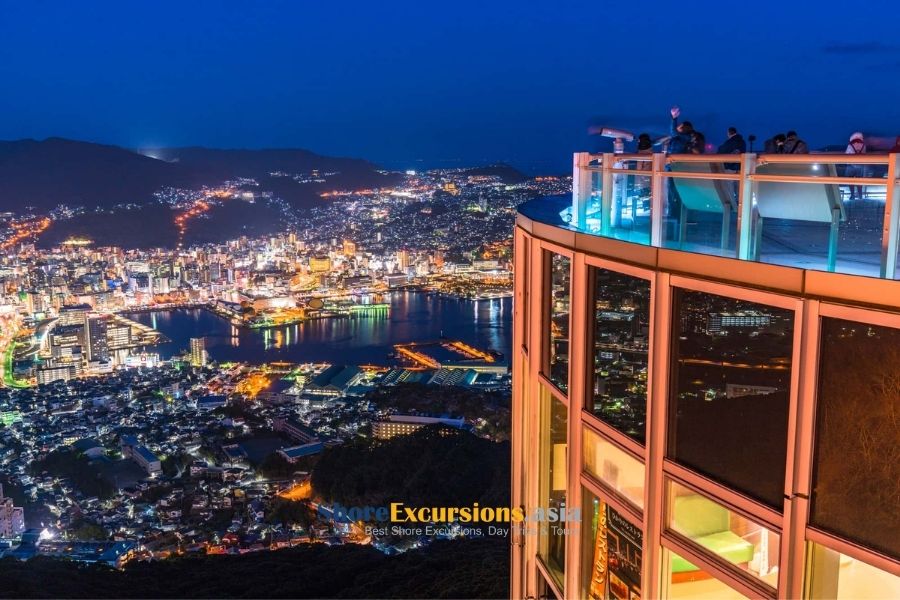
Due to being a 333-meter high mountain located near the Nagasaki’s city center, Mt. Inasa is one of the best night view spots in Nagasaki. There are some television, radio antennas and a restaurant where visitors can enjoy the incredible night view. Visitors can access the observation deck in several ways including ropeway, walking, taxi, and car.
Nagasaki Penguin Aquarium (Family-friendly shore excursions)
Looking for something lighthearted and fun during your stay in Nagasaki? The Nagasaki Penguin Aquarium is a charming spot that delights visitors of all ages. Home to over 180 penguins from different species, the aquarium lets you get up close to these adorable creatures in both indoor and outdoor settings. The highlight is the natural beach area, where penguins swim gracefully in the open sea - a rare sight you won’t find in most aquariums.
Families love it here because children can watch the penguins waddle, play, and dive, while adults enjoy the relaxing seaside atmosphere. Interactive feeding sessions and educational exhibits also make it both entertaining and meaningful.
Shimabara & Unzen Onsen
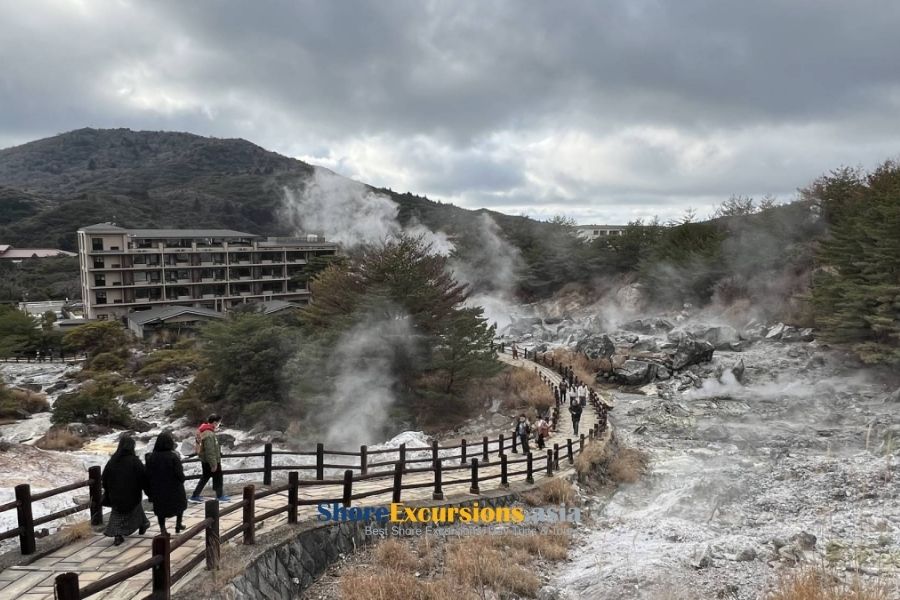
If you have a little extra time, venture beyond Nagasaki city for a rewarding day trip to Shimabara and Unzen Onsen:
- Shimabara: Step back in time as you wander through the atmospheric streets of Shimabara. Visit the striking Shimabara Castle, explore preserved samurai houses, and stroll through quiet neighborhoods filled with charm. The town’s spring-fed water channels and gardens create a peaceful backdrop for leisurely exploration.
- Unzen Onsen: Just a short journey away lies Unzen, a historic hot spring resort surrounded by volcanic landscapes. The area is famous for its steaming “Unzen Jigoku” (Hell Valleys), where bubbling hot springs and sulfur vents create a dramatic natural scene. After sightseeing or a gentle hike, relax in a traditional onsen bath, letting the mineral-rich waters soothe your body and mind.
Together, Shimabara and Unzen Onsen offer the perfect mix of culture, history, and natural beauty. This is an ideal escape for travelers seeking to experience the deeper side of Kyushu beyond Nagasaki’s city center.
Top Nagasaki Cherry Blossom Spots You Shouldn't Miss
Spring is one of the most magical times to visit Nagasaki. From late March to early April, the city and its surroundings burst into soft shades of pink and white, creating an atmosphere that feels both festive and serene. For travelers planning their itinerary, enjoying cherry blossoms is not only a seasonal highlight but also one of the most memorable things to do in Nagasaki. Below are some of the best spots to experience hanami (flower viewing).
Sakura no Sato - Place to Visit in Nagasaki
Unlike other parts of Japan, Sakura no Sato Park has beautiful cherry blossoms bloom all year long. In the most ideal timing which is in spring is still the peak, there are over 3,000 trees bloom. The season can last until September, and even rarer varieties start in October and during winter. In the garden, a rest-house, open-air stage, and the Sakura museum are also available for visitors.
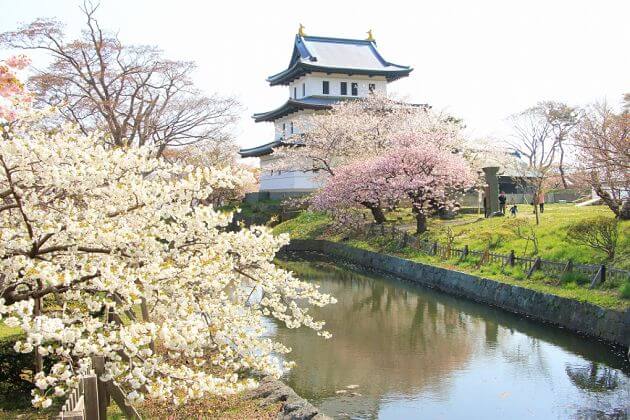
Tateyama Park
Tateyama Park lies on terraced hills overlooking Nagasaki, is a must-visit place during the cherry blossom season. This is a very popular picnic spot where visitors can enjoy a vision of pale-pink in the cherry blossom seasons. In case you are getting hungry, there are many stalls selling delicious Japanese traditional food and drinks. Moreover, people also come here for the fascinating night view of the city.
Nagasaki Peace Park
Known worldwide for its historical significance, Nagasaki Peace Park becomes even more moving in spring when cherry blossoms frame the monuments and statues with gentle beauty. Here, visitors can combine quiet reflection at the Atomic Bomb Memorial with leisurely walks under blooming sakura trees. The contrast between history and nature makes it a truly unique hanami spot. For those who want to combine cultural depth with seasonal beauty, this is one of the most rewarding things to do in Nagasaki in spring.
Omura Park - A Top 100 Cherry Blossom Spot in Japan
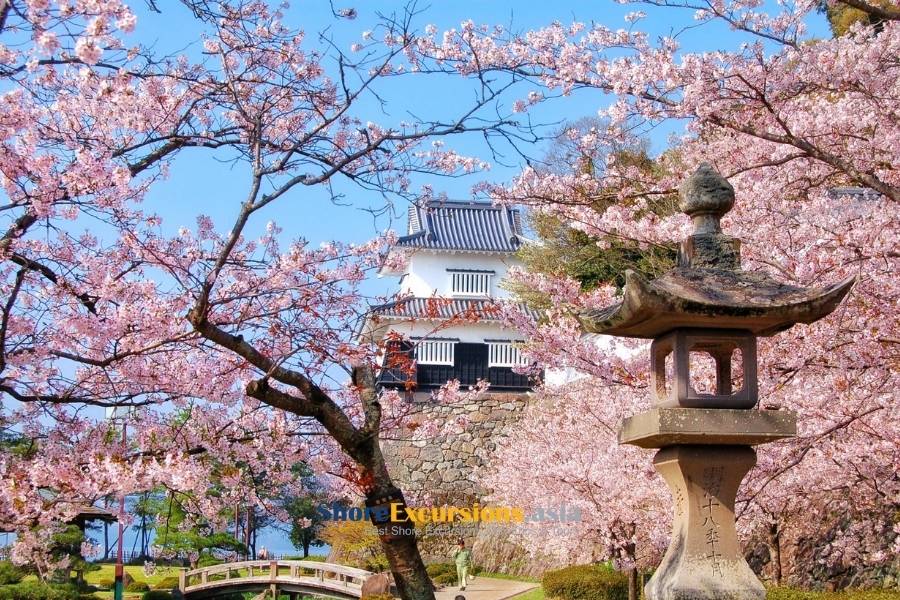
Located about 40 minutes from central Nagasaki, Omura Park is ranked among the “100 Best Cherry Blossom Spots in Japan”. With over 2,000 trees, including the rare Omura-zakura variety that produces multiple layers of petals, the park feels like a dreamscape during peak bloom.
Hanami picnics are popular here, and the wide open spaces make it perfect for families and photographers. If you’re planning a spring itinerary, this is a must-see among the things to do in Nagasaki and its prefecture.
Nabekanmuri Park
For travelers who love combining landscapes with blossoms, Nabekanmuri Park offers breathtaking views of Nagasaki city and harbor. Situated on a hillside, it’s especially stunning at sunset when the skyline glows behind rows of cherry blossoms.
Locals gather here during hanami season, creating a lively yet relaxed atmosphere. Visiting this park gives you a chance to experience Nagasaki like a local, making it a special addition to your list of things to do in Nagasaki.
Nagasaki is more than a city of remembrance, it is a destination of cultural fusion, natural beauty, and culinary delights. From reflecting at the Peace Park to savoring Champon noodles in Chinatown, each experience adds a layer of richness to your journey through Japan. Nagasaki promises memories that are both meaningful and inspiring. If you are looking for a city that combines history with warmth, resilience with beauty, and tradition with international flair, Nagasaki is the perfect choice.

